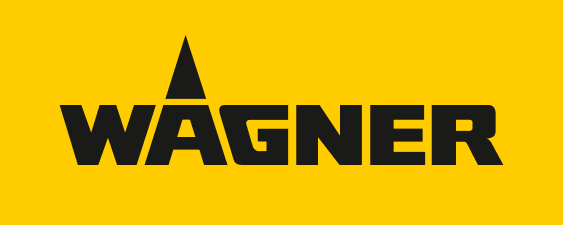Airless
Various techniques are used in paint spraying. One of the most famous is the “Airless” technique. Airless literally means “without air” because (as many people think) it produces very little overspray. In fact, the paint is forced under pressure through a small hole (spray tip), so an airless sprayer is not actually "airless".
An airless sprayer usually consists of a suction pump which, as we said before, forces paint under pressure through a spray tip. The paints can either be emulsions, stains, wall paints, primers and undercoats or any other water- and/or synthetic-based liquids. Structured paints (with granular solids) are usually not sprayable with an airless machine.
Paint types and uses
Virtually all paint types are sprayable with an Airless. This is because it has special spray tips available in hundreds of sizes, ranging from tips that can handle very viscous liquids to tips that can handle extremely thin liquids. A spray tip simply clicks into the paint gun so you can easily change it for thicker or thinner paint.
An Airless sprayer is usually more suitable for large surface areas and in nearly all cases it is a practical solution for interior wall paint (latex). Almost any Airless sprayer can handle big lacquer and staining projects. If you want to spray thicker paint for outdoor projects (exterior latex), professional paint, or flame retardants, you will often need a bigger spray tip. You should carefully check that the machine you buy has sufficient capacity for the job. The manual will explain what maximum tip size a machine with a certain capacity can handle.
Do you know what kind of paint you want to use? Then ask for the technical sheet. This will indicate if the Airless can spray the paint and if so, what the maximum tip size is. Keep this in mind so that you always buy the right paint sprayer with the capacity you need.
The Airless tip stands for a beautiful spray finish, a large surface area, durability, spray pattern and relatively long cleaning and installation time. Due to the relatively wide spray pattern (overspray), you will need to tape off more than you would with other techniques. However, once you have started, you will quickly create an extremely good finish on your walls, shutters, woodwork, boats, etc.
Common projects for this sprayer type are: indoor and exterior walls, wooden (garden) sheds, ships (especially two-component paints). Series of furniture, doors, floors, impregnation projects, etc.
Airless versus other techniques
- Suitable for larger projects
- Intensive use
- More overspray
- Attractive spray pattern
- Needs more preparation and cleaning time
- Less accommodating (harder to use)
- Sustainable technology
- Relatively noisy
HEA
HEA is a completely new technique developed by Wagner. It has all the features of Airless plus some HVLP features to combine the best of both worlds.
As you can read in the Airless section, an Airless machine is suitable for spraying large surfaces, has a wide range of applications and provides a nice finish. However, an Airless sprayer produces relatively a lot of overspray, is harder to use, less forgiving, and makes quite a lot of noise.
HVLP, on the other hand, may offer a slightly less attractive spray pattern, but it is friendlier and easier to use, produces less overspray and is also suitable for a wide range of jobs. Better said: it is especially suitable for smaller areas and less intensive use.
HEA advantages
And now there is HEA, which stands for "high efficiency airless". As the name suggests, it is still a kind of Airless machine. The difference lies in the capacity. An HEA paint sprayer has less capacity than an Airless sprayer but delivers the same liter per minute yield (speed of work) and can handle the same maximum viscosity (maximum thickness of the paint). The revolutionary design combines the refinement of HVLP with the power of Airless.
As a result, you get a sprayer that produces less noise, produces 50% less overspray, is far more user-friendly, has a higher liter yield, can handle thicker paint and is far more forgiving than Airless. In addition, the spray pattern of HEA is even more attractive than Airless. The brute force of Airless sets it apart from this promising advanced technology.
So, is it all over for Airless? We don’t think so! We think Airless is just moving on to bigger projects, such as huge halls and warehouses. Projects that involve lots of meters a day will keep on finding the brute force of Airless very desirable. However, if you are a demanding consumer, a freelance painter, or a landlord (of apartments), then HEA would be a more than interesting option for you.
HEA stands for a particularly nice spray, user friendliness, up to 50% less overspray, fast working and very wide range of use. Common projects for this type of paint sprayer include: indoor and exterior walls, wooden sheds, ships (especially two-component paints). Furniture, doors, floors, impregnation projects, etc.
HEA versus other techniques
- Suitable for larger projects
- Moderately intensive use
- Less overspray
- The most attractive spray pattern
- Less preparation and cleaning time
- Accommodating (less difficult to use)
- Relatively less noise



